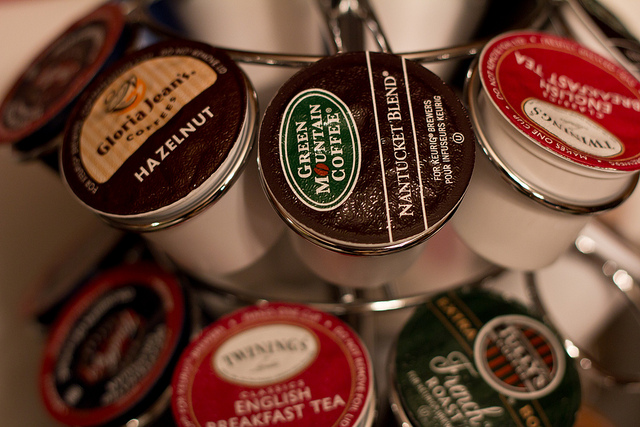Send your question to Umbra!
Q. Dear Umbra,
My grandparents just gave me a Keurig single-cup coffee machine for my birthday. I would have said no thanks had they asked, but I have to admit that it’s pretty handy. So which is more wasteful: Throwing away the non-recyclable pods, or dumping out leftover coffee from an old pot gone cold? With a Keurig, there’s never any risk of making a pot too large and throwing some out. Since coffee beans are an extremely water-intensive crop to grow, pouring out those two cups is a much bigger waste than it may seem.
Nathan E.
Washington, D.C.
A. Dearest Nathan,
This is what our friends on Twitter call, I believe, a #firstworldproblem. You Keurig users worry a lot, and you’ve made this question something of a spring ritual hereabouts. Given the recent surge in sales of Keurigs and their ilk, however, I’ve decided to dive into the brew-haha once more.
Let’s look at the scenario you have identified. On the one hand, we have a nifty machine that uses less energy than a traditional coffee pot. According to a detailed comparison [PDF] from the Energy Star program, estimated annual household energy use for a 10-to-12-cup drip filter coffeemaker is 100-150 kilowatt-hours (kWh), compared to 45-65 kWh for a single-serve coffeemaker. However, your little machine generates untold waste in the form of ridiculously unrecyclable plastic-and-foil pods. It also makes you spend silly amounts of money. Americans bought $715 million worth of K-cups during the last quarter of 2011. That translates to about $50 per pound of coffee, The New York Times helpfully tells us, versus the typical $8-$12 per pound you pay when you buy coffee in bulk.
The company behind the Keurig, Green Mountain Coffee Roasters, is well aware of the waste issue. The waste issue that it, ahem, created. It has launched, among other things, a workplace “recapture” program in some states called Grounds to Grow On, which composts the grounds and burns the pods to create energy; and a new system, Vue, which uses marginally more recyclable materials. But your best bet for greening this new habit of yours, Nathan, is a reusable filter called My K-Cup. Yes, it sounds like a feminine hygiene product, but I hope you will still buy one. You use it with the coffee of your choice. This reduces your impact on the landfill, and reduces coffee’s impact on your wallet, since you won’t be springing for disposable cups all the time. There are other reusable cups that work with the Keurig — I encourage you to investigate. You could also drop your pals at Green Mountain a little note encouraging them to continue their efforts to make their single-serve products, which are clearly not going away any time soon, more sustainable.
As to the “risk” of making a pot too large and having to throw it out, I think that’s what they call a straw man. To wit: Don’t make more than you need. And if you do, don’t throw it out. Make ice cubes! Put the leftover coffee in your garden! Cook with it! Compost it! Recolor your linens! The web abounds with ideas for using this morning’s dregs. Which is good, since you’re right that coffee is an eco-intensive crop.
By the way, there are two other steps that can satisfy one’s need for immediate, individual coffee servings without all the disposable plastic nonsense: Use a French press, as many happy Grist readers recommend, or swing by a local coffee shop — just don’t forget to bring your own mug.
Primly,
Umbra




